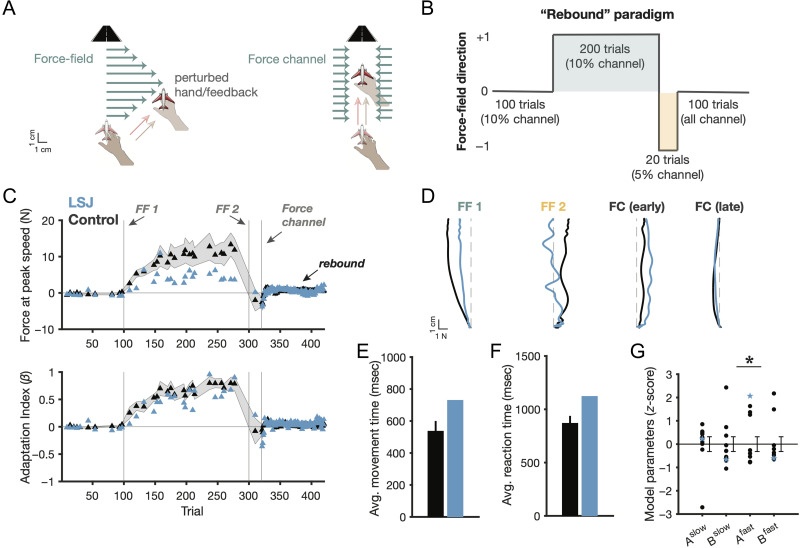Figure 4. .
Force field adaptation. (A) Schematic of force field trials (left) and force channel trials (right), where the latter is designed to measure learning and suppress errors. (B) Schematic of the “rebound” force field learning paradigm. (C) Learning curves, reflected in lateral forces (against the perturbation) at peak speed (top), and measured as an “adaptation index,” which involved regressing produced forces on a given force channel trial against the ideal force profile for that trial (i.e., an adaptation index of 1 = perfect learning). Error shading = 1 SEM. (D) Force profiles on outbound phase of reaches, with the abscissa representing lateral force (in Newtons) and the ordinate representing position (in cm). (E–F) Average (median) movement times and RTs during force field blocks. (G) Z score model parameters after fitting the “two-state” model of motor adaptation. Error bars = 1 SEM.

